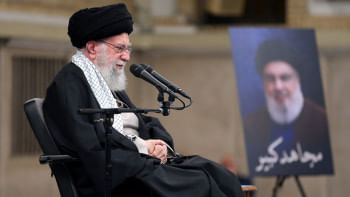Brewing history out of coffee

For many of us, coffee remains an embedded part of life; a go-to beverage at all times and an aid in running our day-to-day activities. Even during the month of Ramadan, many of us like a cup of hot brewed coffee to seal the day with some raw energy and bring order to our chaotic minds.
Coffee has captured our popular imagination throughout history, and its flavours and tastes have greatly evolved due to its enduring demand over the ages. The demand and daily nature of the coffee habit has given rise to the concept of coffee shops and made them intrinsic to the intersection of many memories, ranging from dates to friendly outings to evening breaks, as well as the entry point for many "firsts" in life.
Coffee, being a global beverage, has evolved continually, and of course, has been commodified and specialised in today's world, according to Jonathan Morris, who chronicles the global history of coffee in his book, "Coffee: A global history."
Before being a major transactional good in the transnational trade routes, which sprung up in the heyday of colonialism introducing the drink to Europe and the New World, coffee's major producers and consumers were Muslims. The foundational myth of coffee rests in the highlands of Ethiopia, where a young goat herder named Kaldi, in the 9th century, ate red coffee berries after initially seeing his goats become increasingly agitated and animated after eating the same. Kaldi is said to be jolted and energised by the rich rawness of the berries, after which he went to his local imam to seek advice.
This story remained enmeshed in Ethiopian folklore, and later on, in Western literature as cross-pollinations of written accounts of coffee crossed borders during 1671. While this history is hard to verify, a sustainable coffee economy did exist centred on the Red Sea, making drinking coffee a habit that lingers to this day in the Middle East and Ethiopia itself.
The word coffee is derived from the Turkish word, kahveh, itself from the Arabic Qahwah, both of which made their place in the lexicons of their respective languages in relation to their gradual association with this fresh stimulant.
As the reach of coffee spread, its aromas and flavours found a new home: the Sufis in Yemen. In this version, in the mid-1400s, a mysterious new plant grows in Ethiopia, which later on finds itself in the dry and arid lands of Yemen. Sufi mystics incorporated the habit of consuming this coffee to help them carry out dhikr, night time prayers concentrated on God, in a trance-like state without any worldly interference. The grounds of the coffee cherry leaves would be boiled and passed around as a dark potion to prepare for a night of deep meditative chanting.
Slowly, coffee found itself routing towards the cities of Mecca, Medina, Istanbul, Cairo, and Damascus amongst many others as its popularity grew. It was this gradual spread that gave birth to a new social institution known as the coffeehouse, which would later leave an imprint on the politics and literature of the whole world.
The first coffeehouse set up in Istanbul became a regular spot where merchants, intellectuals, and the who's who of the Ottoman Empire rubbed shoulders and discussed the heated topics of the day. As time lingered on, these original coffeehouses came to be known as mektab-i-irfan, or schools of knowledge. Coffee, as a stimulant, found itself being debated from the pulpit of the mosques to the courts of the royal palaces.
Later on, as more trading routes opened up, coffee went West bound as Venetian merchants took it everywhere, and with each sip, a new method of brewing was invented again, bridging the East and West once again for the love of a drink which has remains an ingrained part of our daily lives still.
Photo: LS Archive/ Sazzad Ibne Sayed

 For all latest news, follow The Daily Star's Google News channel.
For all latest news, follow The Daily Star's Google News channel. 



Comments